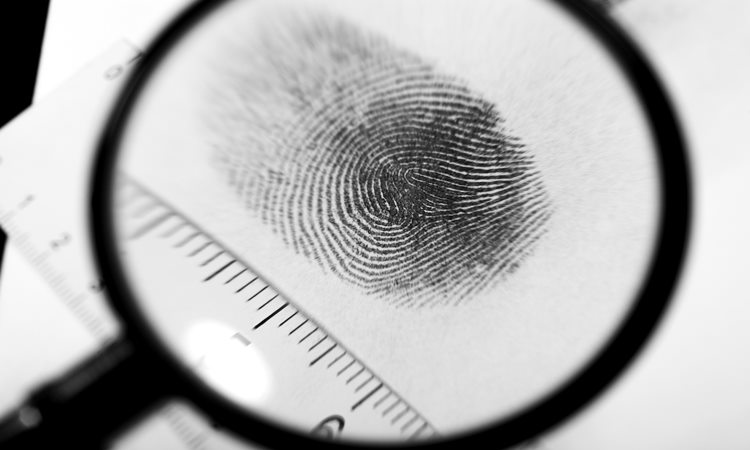Unveiling 5 Fascinating Fingerprint Facts
FINGERPRINT FACTS – In this article, you will learn five (5) interesting facts about fingerprints.
You may be familiar with the idea that your fingerprints are unique, and no one else globally possesses the exact ridge pattern found on your fingertips. This uniqueness has made fingerprints a longstanding method for identifying individuals, with Chinese societies possibly utilizing them for this purpose as far back as 300 BCE.
Despite their well-established individuality, fingerprints remain enigmatic to scientists and are an ongoing subject of study. Nevertheless, there are some known facts about them.

1.Your Fingerprints Contain Whorls, Arches, and Loops
Formally known as dermatoglyphs, the ridge patterns on your fingertips, a term derived from the Greek words derma (skin) and glyph (carving), are commonly referred to as fingerprints. These patterns, categorized into three fundamental types – loops, whorls, and arches, exhibit distinctive characteristics. Loops, constituting 60% of fingerprints, manifest as curved ridges forming an elongated C shape with open ends pointing in various directions. Whorls, accounting for 35%, appear as ridges arranged in concentric circles or spirals. Arches, the least prevalent at 5%, resemble the contour of a mountain. It’s noteworthy that when people mention fingerprints, they typically encompass both the actual ridges and their corresponding impressions.
2. It’s Almost Impossible to Change or Eliminate Fingerprints
The patterns of fingerprints remain constant and do not naturally vanish throughout a person’s lifetime. Efforts to erase fingerprints are exceptionally challenging, as demonstrated by notorious criminals like John Dillinger, who attempted to use acid to eliminate his fingerprints, and other Depression-era murderers who tried to eradicate them through knife cuts. These endeavors proved futile, underscoring the near impossibility of purposefully eliminating fingerprints, as the ridges inevitably regenerate into the same patterns.
Nevertheless, there are specific circumstances in which individuals may not possess fingerprints. Adermatoglyphia, a genetic condition, causes individuals to be born without ridges on the fingertips, palms, or soles of the feet. Skin conditions such as psoriasis and prolonged manual labor can alter or wear down the ridges. Additionally, certain chemotherapy drugs can induce swelling and blistering in the hands, leading to the loss of fingerprints.
3. Fingerprints Form Before You’re Born
Research indicates that the formation of ridges on the fingers, hands, toes, and feet occurs under the influence of both genetic and environmental factors during the third to sixth months of fetal development. Genes responsible for the development of dermal layers in these body regions play a crucial role in determining the size, shape, and pattern of these ridges. The chemical balance in the mother’s uterus is also believed to contribute to this process. The cumulative impact of these factors results in the creation of unique dermatoglyphs, making even identical twins’ fingerprints distinct. It is noteworthy, however, that despite centuries of scientific examination, there is still no consensus among scientists regarding the precise mechanism of fingerprint formation.

4. The Function of Fingerprints Is Still a Mystery
Scientists do not unanimously agree on the purpose of fingerprints, but various theories exist. Initially, biologists presumed that dermatoglyphs evolved to enhance grip. In 2009, two researchers from the University of Manchester tested this hypothesis by sliding hard plastic sheets over their fingertips and measuring friction. Surprisingly, the ridges were found to decrease the contact area between the fingertip and plastic, diminishing grip strength.
Recent studies propose an alternative explanation, suggesting that fingerprints contribute to our sense of touch. In a 2021 investigation at Umeå University in Sweden, researchers observed 12 participants’ nerve responses as textured cards were moved across their fingertips. The findings indicated sensitivity hotspots corresponding to the ridge patterns of participants’ fingerprints, supporting the notion that fingerprints augment our tactile sensation.
5. Animals Have Unique Fingerprints, Too
Scientists believed that fingerprints enhanced our grip, drawing a connection to other tree-climbing primates such as gorillas, orangutans, and chimpanzees, which also possess unique dermatoglyphs on their fingers and toes. Despite humans not being related to koalas, the similarity in their fingerprints suggests convergent evolution, where unrelated species independently evolve comparable traits, according to biologists.
READ ALSO: Top 19 Anti-Tracking Software For 2023
